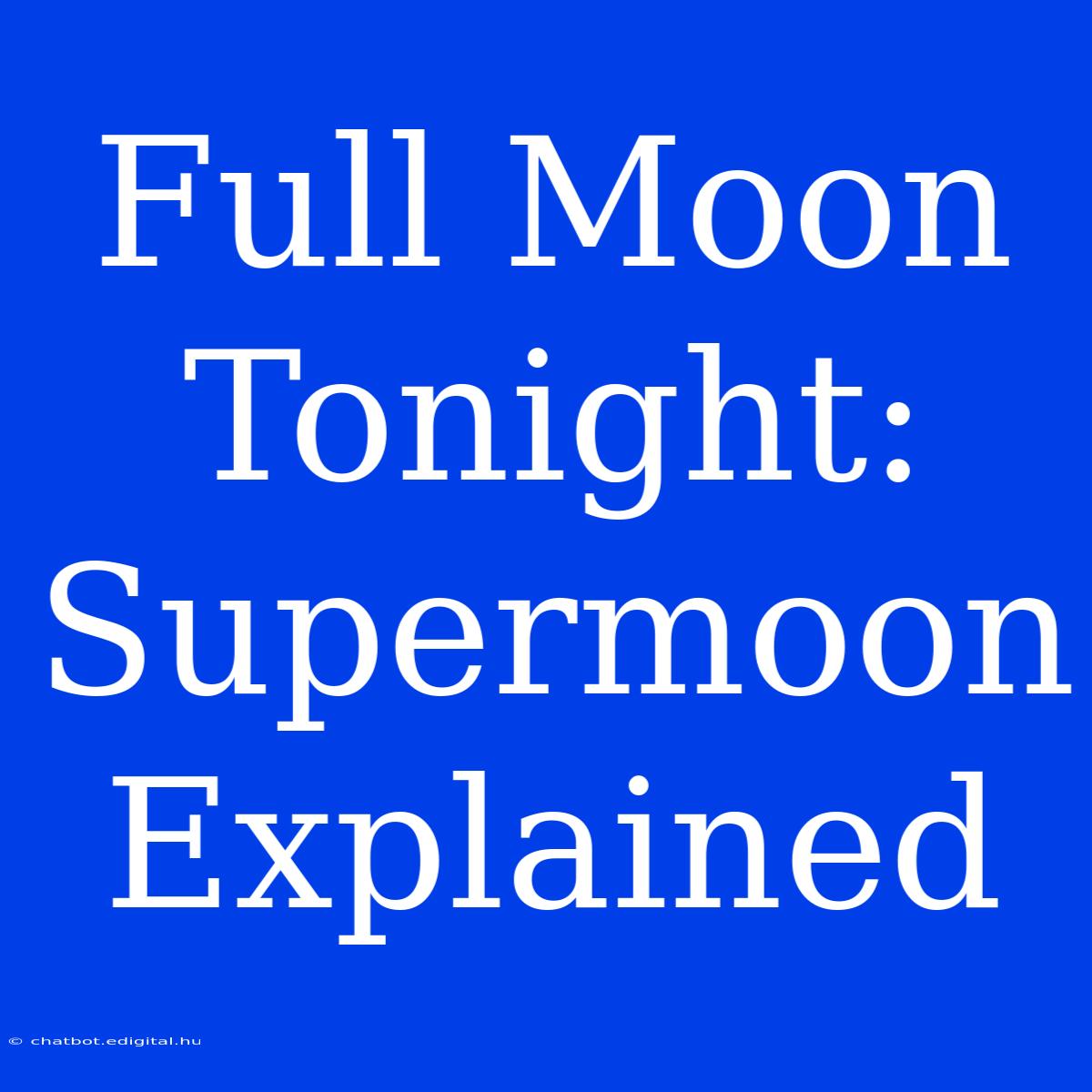Full Moon Tonight: Supermoon Explained - Witness a Celestial Spectacle!
Have you heard whispers of a supermoon gracing the night sky? A supermoon is a celestial event where the moon appears larger and brighter than usual. It's a sight to behold, captivating skywatchers worldwide. This article delves into the intricacies of supermoons, offering insights into this fascinating phenomenon.
Editor Note: This comprehensive guide on supermoons has been compiled today, offering timely information on the lunar spectacle.
Understanding the dynamics of supermoons is crucial for any astronomy enthusiast. The moon's orbit around Earth isn't perfectly circular but slightly elliptical. This means the moon's distance from Earth varies throughout its journey. When a full moon coincides with the moon's closest approach to Earth (perigee), we witness a supermoon.
Our dedicated team has analyzed astronomical data and expert insights to create this supermoon guide. This analysis includes studying lunar phases, orbital mechanics, and historical supermoon events. The result? A comprehensive resource empowering you with knowledge about these celestial wonders.
Key Takeaways of Supermoon:
| Aspect | Description |
|---|---|
| Appearance | Larger and brighter than a typical full moon |
| Timing | Full moon occurring during perigee (closest point to Earth) |
| Frequency | Multiple times a year, but not all are equally noticeable |
| Impact | Minor tidal effects, increased nocturnal illumination |
Let's explore the celestial dance of supermoons:
Supermoon: A Celestial Spectacle
The phenomenon of a supermoon arises from the combined effects of the moon's orbital path and its phases. The moon's elliptical orbit results in variations in its distance from Earth. During perigee, the moon is closest to Earth, and during apogee, it's farthest.
Supermoon's Significance: A Closer Look
The heightened brightness and apparent size of a supermoon have intrigued observers for centuries. While the difference in size compared to a regular full moon might not be dramatic, the effect is noticeable, especially when comparing side-by-side images.
Understanding Supermoon's Impact
Although the effects of a supermoon are relatively minor, they are worth noting.
Tidal Effects: The gravitational pull of the moon influences Earth's tides. During a supermoon, the moon's proximity to Earth amplifies these tidal forces, potentially leading to slightly higher high tides and lower low tides.
Increased Illumination: The increased brightness of a supermoon enhances nocturnal illumination, making it easier to see under moonlight.
FAQ: Frequently Asked Questions
Q: How often do supermoons occur?
A: Supermoons occur multiple times a year, but their prominence varies depending on the moon's position in its orbit. Some supermoons are more noticeable than others due to their proximity to perigee.
Q: Are supermoons dangerous?
A: Supermoons are not inherently dangerous. The increased gravitational pull might lead to slightly higher tides, but these variations are generally within the normal range and do not pose any significant threat.
Q: What makes a supermoon special?
A: The combination of a full moon phase and the moon's closest approach to Earth makes a supermoon a visually stunning event, capturing the attention of skywatchers and astronomers alike.
Q: How can I best view a supermoon?
A: The best way to enjoy a supermoon is to find a location with minimal light pollution. Head outdoors, away from city lights, and let your eyes adjust to the darkness. You can also use binoculars or telescopes to enhance your viewing experience.
Q: Are supermoons a recent phenomenon?
A: Supermoons have been happening throughout history, but the term "supermoon" was coined relatively recently. However, these events have been observed and documented for centuries.
Tips for Observing Supermoons
- Choose a Location: Seek a spot with minimal light pollution. A park, a beach, or a rural area can provide an ideal viewing experience.
- Time It Right: Supermoons are most prominent when they're high in the sky. Check online resources for accurate timing information.
- Embrace the Night: Allow your eyes to adjust to the darkness for optimal viewing.
- Capture the Moment: If you're a photographer, capture the breathtaking sight of the supermoon.
- Share the Wonder: Share your supermoon experiences with others and spread the wonder of astronomy.
Supermoon: A Confluence of Celestial Beauty
Supermoons are a captivating reminder of the wonders of the night sky. They provide an opportunity to pause, appreciate the celestial dance, and connect with the vastness of space. So, next time a supermoon graces the night sky, take a moment to marvel at its celestial beauty and immerse yourself in the wonders of our universe.

